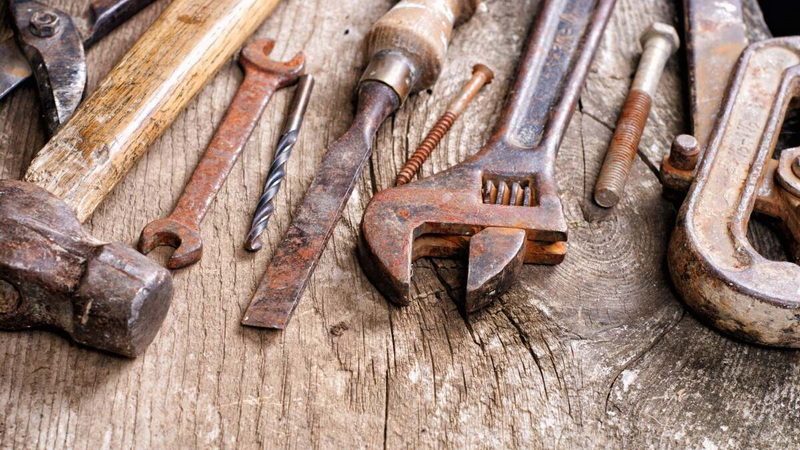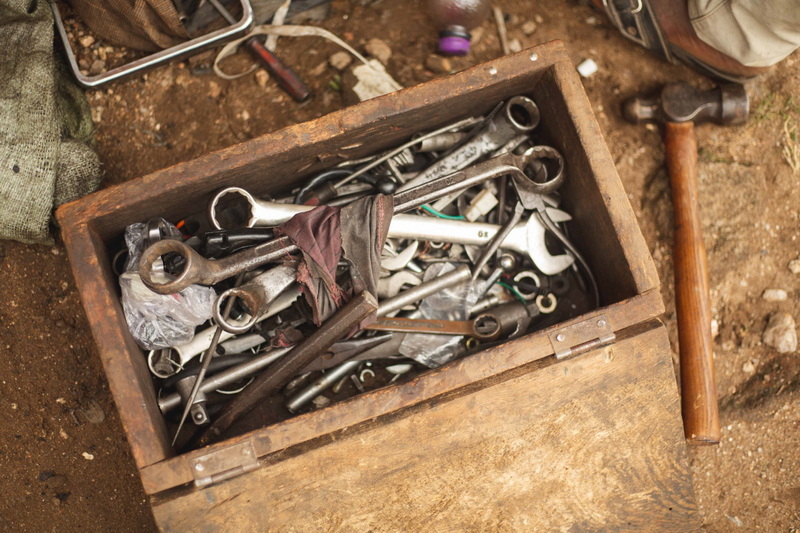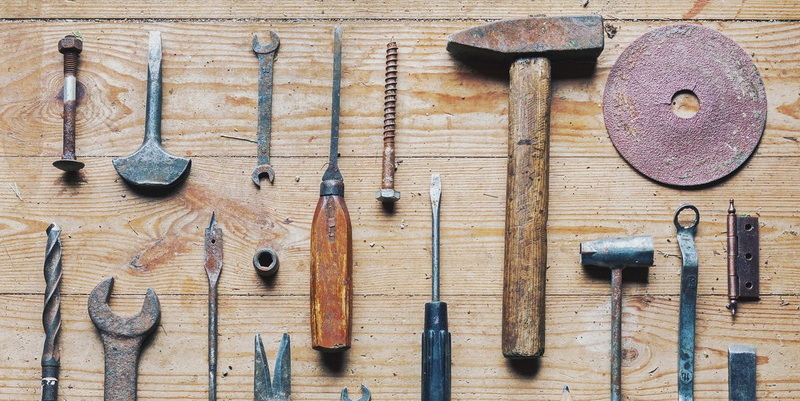Content Menu
● Understanding Rust on Hand Tools
● Why Does Rust Form on Tools?
● Effective Methods to Remove Rust from Hand Tools
>> 1. Soaking in Vinegar and Salt Solution
>> 2. Baking Soda Paste for Light Rust
>> 3. Mechanical Removal: Scrubbing, Sanding, and Grinding
>> 4. Electrolysis Rust Removal
>> 5. Natural Remedies: Potatoes, Lemon Juice, and Onions
● Step-by-Step Guide: Removing Rust Using Vinegar and Salt (Detailed)
>> Materials Needed
>> Procedure
● Additional Rust Removal Techniques
>> Using Commercial Rust Removers
>> Using WD-40 and Aluminum Foil
● Protecting Your Tools After Rust Removal
● How to Handle Rust on Different Types of Tools
>> Rust on Wooden-Handled Tools
>> Rust on Precision Tools
● Conclusion
● FAQ
>> 1. How long should I soak tools in vinegar to remove rust?
>> 2. Can I use WD-40 to protect tools after rust removal?
>> 3. Is baking soda safe for all types of tools?
>> 4. What if my tool has moving parts with rust?
>> 5. Can I remove rust without scrubbing?
Rust on hand tools is a common problem that can degrade their performance, appearance, and lifespan. Fortunately, there are many effective ways to remove rust and restore your tools to good working condition. This comprehensive guide will walk you through various methods—ranging from simple household remedies to specialized techniques—complete with tips on how to protect your tools afterward. Whether you have light surface rust or heavy corrosion, this article will help you bring your hand tools back to life.

Understanding Rust on Hand Tools
Rust forms when iron or steel reacts with oxygen and moisture, creating iron oxide. This corrosion weakens the metal, making tools less reliable and harder to use. Rust not only affects the aesthetics of your tools but also compromises their structural integrity, potentially leading to breakage or malfunction during use. Removing rust promptly is essential to maintain tool function and extend their lifespan.
Why Does Rust Form on Tools?
Before diving into removal methods, it's important to understand why rust forms. Tools made from iron or steel contain iron atoms that react with oxygen in the presence of moisture (water or humidity). This chemical reaction produces iron oxide, commonly known as rust. Factors that accelerate rust formation include:
- Exposure to water or humid environments
- Lack of protective coatings or oils
- Storage in damp or poorly ventilated areas
- Contact with corrosive substances such as salts or acids
Knowing these factors helps in both preventing rust and choosing the appropriate removal method.
Effective Methods to Remove Rust from Hand Tools
1. Soaking in Vinegar and Salt Solution
One of the most popular and accessible methods involves soaking rusty tools in a mixture of white vinegar and salt. Vinegar is a mild acid (acetic acid) that dissolves rust, while salt increases the acidity to speed up the process.
How to do it:
- Prepare a container large enough to fully submerge your tools.
- Pour in white vinegar and add salt at a ratio of about 1/4 cup salt per liter (4.5 cups) of vinegar.
- Submerge the tools completely and let them soak for 12 hours up to 3 days, depending on rust severity.
- Check periodically; once rust softens, scrub it off with steel wool, a wire brush, or sandpaper.
- Rinse thoroughly with water to remove vinegar and salt residues.
- Dry the tools completely to prevent further rusting.
This method works well for tools with heavy rust and is safe for most hand tools if you rinse and dry them properly afterward.
2. Baking Soda Paste for Light Rust
For less severe rust, baking soda is an excellent gentle abrasive.
Steps:
- Clean and dry the tool.
- Make a paste by mixing baking soda with water.
- Apply the paste to rusty areas and let it sit for about an hour.
- Scrub with steel wool, a metal brush, or a stiff brush.
- Rinse and dry thoroughly.
This method is good for thin metals or small rust spots and avoids harsh chemicals.
3. Mechanical Removal: Scrubbing, Sanding, and Grinding
Sometimes, manual or mechanical abrasion is necessary, especially for stubborn rust.
- Use steel wool, a stiff wire brush, or sandpaper (starting with coarse grit and moving to finer grit).
- For heavy rust, consider power tools like a drill with a wire brush attachment or an angle grinder with a wire wheel.
- Always wear protective gloves and eye protection when using power tools.
This method requires elbow grease but is very effective for surface rust and pitting.
4. Electrolysis Rust Removal
Electrolysis is a chemical process that uses an electric current to remove rust without damaging the metal.
- Submerge the rusty tool in a solution of water and washing soda (sodium carbonate).
- Use a battery charger or DC power supply to run current through the solution.
- Rust will loosen and lift off the tool, often collecting on a sacrificial anode.
- This process can take several hours but is highly effective for intricate or delicate tools.
This method is more advanced but preserves delicate tool surfaces and is great for intricate tools.
5. Natural Remedies: Potatoes, Lemon Juice, and Onions
Certain household items contain acids that can help remove rust:
- Potatoes: Oxalic acid in potatoes can dissolve rust. Cut a potato in half, sprinkle salt or baking soda on it, and rub the rusted area.
- Lemon Juice Paste: Mix lemon juice with baking soda to form a paste, apply to rust, let sit for 30 minutes, then scrub.
- Onions: The amino acid sulfoxides in onions form sulfenic acid, which breaks down rust. Rub a cut onion on rusted metal.
These methods are gentle and good for light rust or delicate tools.

Step-by-Step Guide: Removing Rust Using Vinegar and Salt (Detailed)
Materials Needed
- White vinegar
- Salt
- Container for soaking
- Steel wool or wire brush
- Baking soda (for neutralizing)
- Clean water
- Dry cloth or rag
- Lubricant oil (e.g., WD-40 or 3-IN-ONE oil)
Procedure
1. Prepare the Vinegar Bath: Fill a container with enough white vinegar to submerge your tools. Add salt at 1/4 cup per liter of vinegar and stir.
2. Soak the Tools: Place the rusty tools in the solution. Let them soak for 12 hours to 3 days, depending on rust severity.
3. Scrub Off Rust: Remove tools and scrub softened rust with steel wool or a wire brush. Repeat soaking if necessary.
4. Neutralize Acid: Soak the tools in a baking soda and water solution for 10 minutes to neutralize vinegar acid.
5. Rinse and Dry: Rinse thoroughly with clean water and dry completely, preferably with a warm oven or in sunlight.
6. Oil the Tools: Apply a thin coat of lubricant oil to prevent future rust. Pay special attention to moving parts.
Additional Rust Removal Techniques
Using Commercial Rust Removers
There are many commercial rust removers available that contain powerful chemicals such as phosphoric acid or oxalic acid. These products can dissolve rust quickly and are ideal for heavy corrosion.
Tips:
- Follow the manufacturer's instructions carefully.
- Use gloves and work in a well-ventilated area.
- Rinse and dry tools thoroughly after treatment.
- These products may be harsh on delicate finishes, so test on a small area first.
Using WD-40 and Aluminum Foil
For light rust, WD-40 combined with aluminum foil can be surprisingly effective.
- Spray WD-40 on the rusted area.
- Crumple a piece of aluminum foil and use it to scrub the rust.
- The foil is abrasive enough to remove rust but won't scratch the metal.
- Wipe clean and apply oil afterward.
Protecting Your Tools After Rust Removal
Once you've removed rust, it's crucial to protect your tools to prevent it from returning.
- Oil Coating: Apply a thin layer of machine oil, mineral oil, or specialized tool oil to metal surfaces.
- Waxing: Some users apply paste wax or car wax to create a moisture barrier.
- Proper Storage: Store tools in a dry, well-ventilated area. Use toolboxes with desiccant packets or silica gel to absorb moisture.
- Regular Maintenance: Clean and oil tools after each use, especially if they've been exposed to moisture.
How to Handle Rust on Different Types of Tools
Rust on Wooden-Handled Tools
Rust on metal parts can spread to wooden handles, causing stains and weakening the wood.
- Remove rust from metal parts as described.
- Clean wooden handles with mild soap and water, then dry thoroughly.
- Apply linseed oil or wood conditioner to protect and nourish the wood.
- Avoid soaking wooden handles in vinegar or water to prevent swelling or cracking.
Rust on Precision Tools
Precision tools like calipers, measuring tapes, or fine screwdrivers require delicate handling.
- Use gentle rust removal methods like baking soda paste or electrolysis.
- Avoid harsh abrasives or power tools that can damage calibration.
- Lubricate moving parts carefully after rust removal.
Conclusion
Removing rust from hand tools is a straightforward process that can save you money and extend the life of your tools. Household items like vinegar, salt, and baking soda provide effective and affordable solutions, while mechanical methods and specialized techniques handle tougher rust. Regular maintenance and proper storage are key to preventing rust from returning. With patience and the right approach, your hand tools can look and function like new again.

FAQ
1. How long should I soak tools in vinegar to remove rust?
Typically, soaking for 12 to 72 hours works well. Check the tools periodically and scrub off softened rust as needed.
2. Can I use WD-40 to protect tools after rust removal?
WD-40 is good for displacing moisture but a dedicated oil like 3-IN-ONE or machine oil is better for long-term protection.
3. Is baking soda safe for all types of tools?
Yes, baking soda is gentle and safe for most metals but is best for light rust rather than heavy corrosion.
4. What if my tool has moving parts with rust?
After rust removal, apply lubricant oil thoroughly into joints and moving parts to restore smooth operation.
5. Can I remove rust without scrubbing?
Soaking in vinegar can loosen rust significantly, but some light scrubbing is usually necessary to remove all residues.